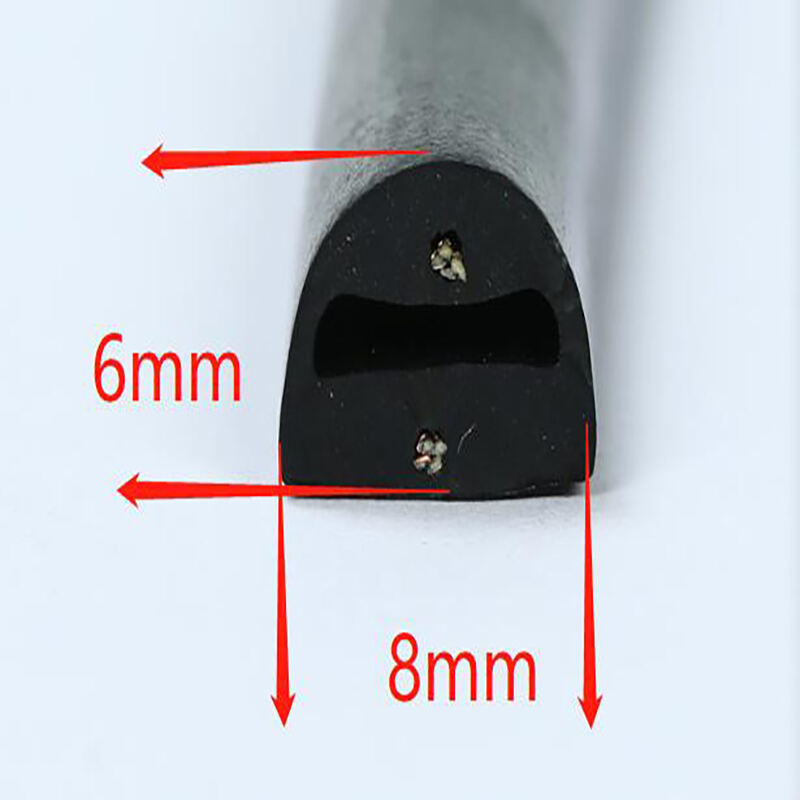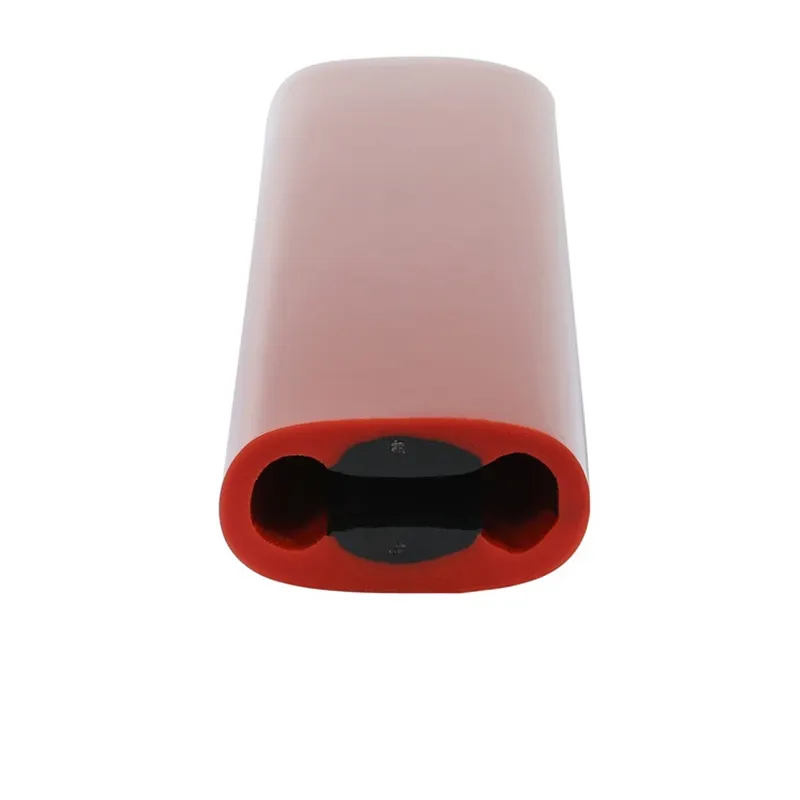Key Performance Metrics for Pressure Strip Switches
Response Time and Activation Precision
How quickly pressure strip switches react matters a lot in their performance, basically measuring how fast they pick up on changes in input signals. This speed becomes really important where quick responses are needed, think about factory automation lines or emergency shut-off systems in manufacturing plants. When it comes to activation accuracy, we're talking about whether the switch actually does what it's supposed to do when activated, something that makes all the difference in maintaining tight control over processes. Most industrial specs call for response times between roughly 5 and 10 milliseconds, keeping those automated systems running smoothly without hiccups. Manufacturers run extensive tests to measure both reaction speed and activation accuracy, setting industry standards that help ensure these components work reliably day after day across different applications.
Threshold Accuracy Across Operating Ranges
Threshold accuracy basically means how sensitive pressure strip switches are at picking up pressure changes inside certain limits, which really matters for how reliable these switches end up being. What goes into making these switches makes a big difference in their threshold accuracy too. Take composite materials for example they tend to make switches more sensitive overall, especially when conditions around them keep changing. Temperature swings and humidity levels can mess with this accuracy quite a bit according to field tests, leading to inconsistent responses from the switches. Most technicians will tell anyone who asks that keeping these switches properly maintained and calibrated regularly is essential if we want them to stay sensitive and trustworthy long term. Looking at what manufacturers actually need, industry data shows that hitting those high accuracy targets isn't just nice to have it's absolutely necessary for things like industrial automation where even small errors matter a lot.
Hysteresis and Deadband Characteristics
When looking at pressure strip switches, hysteresis refers basically to how the switch responds when pressure changes happen. There's often a lag time between when something happens and when the switch actually reacts. This matters quite a bit because if the switch isn't consistent about detecting those pressure shifts, problems can arise especially in areas where accuracy counts, think robotic assembly lines for instance. Then there's what we call deadband characteristics too. Basically, this means there's a small window where nothing happens even though pressure might be changing slightly. Getting this right helps prevent unwanted activations, making systems much more dependable overall. Automotive factories depend on all these factors daily to keep production safe while maintaining efficiency standards. Different manufacturers produce switches with varying hysteresis levels depending on design choices made during development. Materials selection plays a big part here along with how switches are configured physically. Engineers need to carefully evaluate these options based on what kind of environment the switch will actually operate in day after day.
Material Durability and Environmental Resistance
Chemical Compatibility of Component Materials
Getting chemical compatibility right matters a lot for pressure strip switches if they need to work properly across different settings. When picking materials, companies should look for ones that stand up against chemicals so the switches don't break down over time. Stainless steel remains popular because it handles harsh stuff pretty well, while Teflon based polymers also perform great in most chemical situations. Using the wrong materials though? That leads to problems fast. We've seen switches literally fall apart after just a few months in certain industrial areas where the air contains corrosive elements. The good news is there are standards out there, like those from ASTM, that give clear direction on what works and what doesn't. Manufacturers who follow these guidelines tend to produce much more reliable products. And plenty of labs exist specifically to test how materials react together, which saves everyone headaches down the road when trying to figure out why something stopped working correctly.
Temperature and UV Radiation Tolerance
Pressure strip switches have to handle certain temperature ranges if they're going to work properly in tough environments. When temps get too hot or too cold, these switches start acting up and stop working right. Take automotive and industrial settings for instance where heat is a constant problem. The switches there really need to stand up against extreme warmth without failing completely. And let's not forget about sunlight either. UV rays eat away at materials over time, so manufacturers often turn to stuff like polycarbonate when making switches meant for outside use. Testing has shown most standard switches can deal with temperatures anywhere between minus 40 degrees Celsius all the way up to 85 degrees. That's why folks in farming and car manufacturing put such emphasis on finding switches that resist both heat and sun damage since their equipment gets exposed to pretty brutal weather conditions regularly. Picking the right materials makes sure these switches keep doing their job even after months or years of being out in the elements.
Abrasion and Compression Fatigue Testing
Testing for abrasion helps figure out how well pressure strip switches can handle wear and tear, which matters a lot when they're used in places where contact happens constantly. The process basically mimics what happens in the field so we can see how different materials break down over time from friction and regular usage. Compression fatigue testing tells us something else entirely about these switches. It shows whether they hold up under constant pressure through multiple cycles, directly affecting how long they last before failing. Manufacturing sectors run all sorts of tests to get solid numbers on both abrasion and fatigue performance. These results then point engineers toward better choices when picking materials or redesigning components. Some folks in the business recommend going for certain metal alloys or composite materials known for resisting wear. Getting certified against standards like ISO for fatigue testing gives manufacturers confidence that their products actually stack up against what the industry considers good enough for real world durability demands.
Sensitivity Profile and Application Suitability
Force Gradient Requirements by Use Case
The force gradient plays a really important role when it comes to pressure strip switches since it determines how much force is actually needed to activate them across different situations. When picking out the correct switch for any particular job, this factor matters quite a bit because various sectors need totally different levels of force. Take cars for example where getting the right force gradient means those life saving airbag systems work properly every single time they should. On the flip side, heavy duty equipment used in factories often needs switches with stronger gradients so workers don't accidentally trigger something dangerous while operating machines. Looking at guidelines from standards bodies like UL 508 or IEC 60947 helps engineers pick the best possible gradient settings that keep everyone safe without wasting energy. Manufacturers are constantly improving these gradients too, which allows for finer control over operations in today's complex environments.
Sealing Integrity Under Dynamic Loads
How well a pressure strip switch maintains its seal really affects how it performs and stays reliable when dealing with changing load conditions. These switches need to handle all sorts of dynamic forces without losing functionality, which matters a lot in tough sectors such as aircraft manufacturing and car production lines. Silicone and polyurethane materials get chosen often because they stretch and hold up over time, making them good choices for sealing applications. Field tests across different industrial settings show that these materials actually keep their seals intact even when subjected to pretty harsh stresses. Most engineers recommend thorough testing procedures for seals, following established guidelines from IP ratings and NEMA standards. This helps protect equipment from dust, moisture, and other environmental threats that could otherwise shorten service life or cause failures down the road.
EMI/RFI Interference Immunity
EMI or Electromagnetic Interference along with RFI or Radio Frequency Interference often messes up how pressure strip switches work, especially when there's lots of electromagnetic stuff going on around them. Good engineering practices involve adding proper shielding materials and selecting components that naturally resist these kinds of disturbances. When we look at real world testing situations, it becomes clear that properly designed systems really cut down on interference problems. This matters a lot for places like hospitals and telecom facilities where signals need to stay clean and strong. Across different industries, manufacturers keep refining their approaches to fight off EMI and RFI better. They're constantly applying lessons learned from compatibility testing and making adjustments to their designs so they can deal with interference issues more effectively in practice.
IP Ratings for Moisture/Dust Protection
Knowing what IP ratings mean matters a lot when looking at how well pressure strip switches handle moisture and dust. These ratings are made up of two numbers generally. The first number tells us about protection from things like dust particles getting inside, while the second one shows how good they are at keeping liquids out. Take IP67 rated switches for instance they can stand up pretty well against dust buildup and even short periods underwater without damage. Standards organizations like IEC set rules for testing equipment to determine these ratings accurately. Many industrial settings actually require certain minimum ratings such as IP65 or IP66 just so machinery keeps running properly despite dirt, rain or other environmental factors. We've seen plenty of real world situations where switches that didn't meet proper IP standards ended up causing problems on factory floors and assembly lines regularly exposed to harsh conditions. Looking ahead, there seems to be growing interest in higher protection levels among manufacturers who want their products to last longer and perform better under tough operating conditions.
Industry-Specific Safety Standards (UL, CE, RoHS)
Standards like UL, CE, and RoHS really matter when it comes to getting pressure strip switches accepted in the marketplace. UL certification basically means products pass certain safety tests, especially important for anything electrical. The CE mark shows a product meets European safety rules, which opens doors across EU nations. Then there's RoHS compliance restricting dangerous materials in manufacturing. This one builds consumer trust while helping protect the environment. Industry insiders point out that certified products tend to sell better and build stronger brands over time. Take RoHS compliant items for example they just work better long term and get picked for green initiatives more often. Getting certified isn't easy though manufacturers face strict testing procedures and need to follow all sorts of safety, health, and environmental guidelines during production.
Third-Party Validation Protocols
Getting third party validation really matters when it comes to building trust in pressure strip switches. When independent groups test these products, they give unbiased looks at quality and whether things line up with industry standards. Groups like UL or IEC set the rules most companies follow during these tests. Names like TÜV Rheinland and Intertek pop up all over different industries offering their validation services. We're seeing more and more companies rely on these certifications lately, going beyond just meeting minimum safety needs. For manufacturers dealing with complicated regulations around the world, having these validations makes getting compliant much easier. People want transparency now, and the market reflects that shift toward wanting better quality assurance. Products validated this way tend to hit both what customers expect and what regulators require consistently.
Cycle Counting Mechanisms for Wear Analysis
Counting how many times pressure strip switches go through their on-off cycles is really important when looking at how they wear down over time. When technicians track these cycles, they get a good idea about how fast components are wearing out and when maintenance might be needed before something breaks. There are several ways this gets done in practice these days. Some folks still use old school electronic counters mounted right on equipment, while others rely on computer programs that automatically log data during normal operations. According to research published in Industrial Maintenance & Plant Operation magazine, there's actually a pretty strong link between switch failures and just plain old age measured in cycles. That makes sense if you think about it anyone who's ever owned anything mechanical knows parts eventually give way after repeated use. The whole point of keeping tabs on these numbers isn't just theoretical either. People working in manufacturing plants tell me all the time that knowing what's coming next helps them schedule repairs without disrupting production schedules. Dr. Jane Dowling, someone I've heard speak at several engineering conferences, puts it simply enough most operators understand why getting ahead of potential problems matters for both safety and bottom line concerns.

Contaminant Ingress Prevention Design
Dust, moisture, and various chemicals can easily get into pressure strip switches, which is why keeping them clean from outside stuff matters so much. Manufacturers tackle this problem by building switches with sealed cases and applying special coatings that act as barriers against dirt and grime. Many modern designs incorporate IP-rated enclosures that actually work pretty well at stopping most common contaminants. The International Electrotechnical Commission sets out detailed guidelines about how protected different equipment should be, helping engineers pick the right level of protection for their specific needs. Maintenance remains an important part of the equation too. Checking regularly for signs of contamination buildup helps avoid costly breakdowns down the road. Experience shows that when companies stick to proper cleaning schedules and inspection routines, they not only keep their switches working properly but also get far better longevity out of their investment.
Field Calibration and Adjustment Capabilities
Getting field calibration right makes all the difference when it comes to pressure strip switches since they operate under pretty complex conditions. When technicians need to calibrate these switches at the actual installation site, they slowly apply pressure until the switch actually flips states. This hands-on approach ensures everything works correctly where it matters most. Real world tests show that regular calibration can boost performance significantly, which explains why so many maintenance teams prioritize it. Industry experts writing in Control Engineering suggest doing this check once a year or whenever environmental factors change dramatically. The good news is newer tech has made things much easier too. Portable calibration tools now let workers adjust settings quickly without needing specialized equipment, keeping pressure switches running at peak efficiency even in tough environments.
FAQ Section
What is the response time for pressure strip switches?
Response time for pressure strip switches ranges from 5 to 10 milliseconds, which is essential for efficient functioning in automated systems.
How can you ensure the chemical compatibility of materials in pressure strip switches?
Using materials like stainless steel and Teflon, known for their resistance to chemical exposure, ensures compatibility and reliability.
Why is the force gradient important in pressure strip switches?
The force gradient dictates the activation force needed for different applications, ensuring safety and efficiency in deployment, particularly in industries like automotive.

